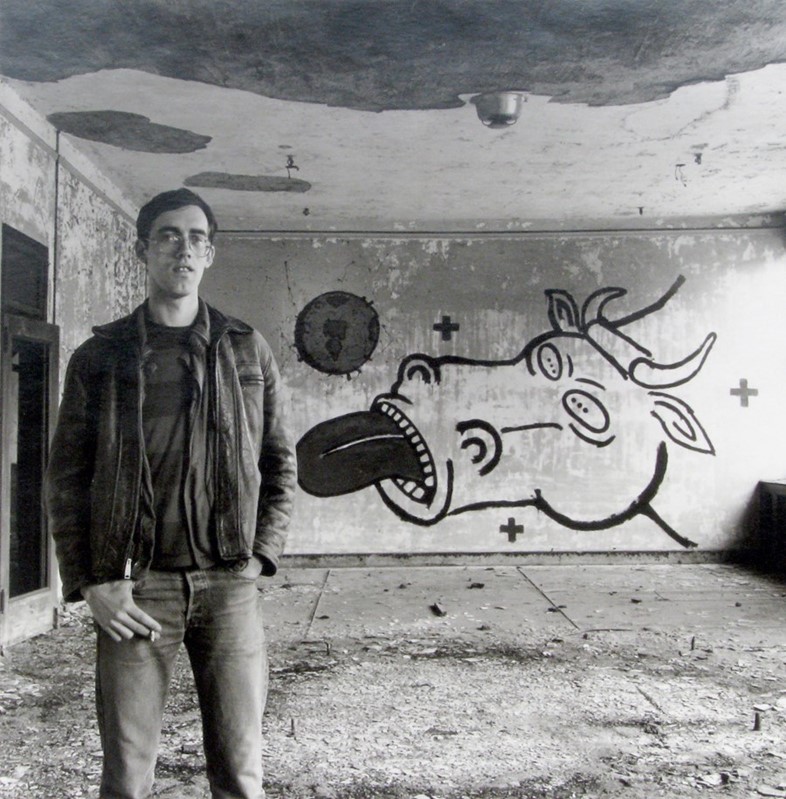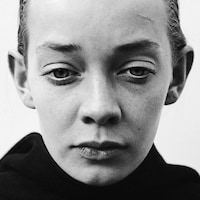The celebrated late artist known for his politicised self-portraits and Aids activism also played in 3 Teens Kill 4 – the experimental group that would cover Chaka Kahn and use tins of beans in their provocative stage shows
Known for creating polemical artworks at the height of the Aids epidemic (of which he would eventually become a fatality, aged just 37), David Wojnarowicz emerged from the New York art scene during one of the most febrile periods in the city’s rich history. Alongside the likes of Nan Goldin, Peter Hujar, Keith Haring, Jean-Michel Basquiat and many more, he was making art on the radical vanguard in the East Village during the 1970s and 80s.
Despite the brevity of his life, Wojnarowicz bequeathed the world an extraordinary body of work as a painter, photographer, filmmaker, performance artist, writer, and Aids activist. His memoir Close To The Knives is a book of commanding urgency, recounting the horrors of his turbulent life as an abused teenage runaway and sex worker with vivid detail; his images of his friend and former lover Peter Hujar on his deathbed are a haunting and tender study of loss; his photographic series Arthur Rimbaud in New York is a striking, surreal examination of urban dislocation and cruising. But today, on what would have been the groundbreaking multidisciplinary artist’s 67th birthday, we look back at one of his less-talked about artistic incursions and remember the time David Wojnarowicz joined a band.
In 1980, Wojnarowicz, then in his mid-20s, worked as a busboy in Danceteria on West 37th street – a Downtown four-storey nightclub later immortalised by Madonna in her 1985 film Desperately Seeking Susan. During his stint at the club, Wojnarowicz formed a band with a few of his Danceteria colleagues, taking the name 3 Teens Kill 4 from the poet Max Blagg, who reappropriated the menacing phrase from one of the New York Times’s gratuitous, sensational headlines.
Emerging from the post-punk scene, 3 Teens Kill 4 epitomised the ethos and sound of pre-gentrification New York City in an era of high street crime, a noisescape beautifully characterised by Carlo McCormick in Artforum as: “too slippery for language and better conveyed in the furtive, desperate gestures of absurd and random sonic violence.”
Along with Wojnarowicz, the band were made up of Brian Butterick, Jesse Hultberg, Doug Bressler, and Julie Hair (later to be joined by William Gerstel in 1984). From the start, they eschewed the traditional lead singer-centric line-up for a multi-vocalist arrangement which also incorporated live spoken word and various found noises and audio captured with a tape recorder, and their sound evolved rapidly into a composite horrorshow encapsulating the ambience of the city from which it came.
At odds with the guitar bands of the post-punk scene, 3TK4’s sound was more defiantly experimental and low tech than most of their contemporaries. Instead, they seem to synthesise the singular style of Talking Heads with a more nightmarish, discordant Suicide. Relying predominantly on a Korg rhythm machine and a Casio drum accompanied by Hultberg’s desolate bass sounds, the band’s performances involved passing various instruments, toys, tape recorders, a microphone sewed into a glove, and, mysteriously, a can of Baked Beans being passed between band members on stage. Wojnarowicz often played toy instruments, not just as a punk rejection of virtuosity and a nod to the DIY zeitgeist, but also because he’d never learned to play anything.
Despite not having mastered an instrument, Wojnarowicz was vital in shaping the band’s visual identity. He created their artwork, including the illustration of a house on fire that would become something akin to a band logo. But, according to McCormick, Wojnarowicz’s most important contribution to the band came in the form of his “barrage of purloined sounds he produced via a handheld tape recorder”. He compares the technique to some of the pioneering hip-hop artists of the day but, in Wojnarowicz’s hands, the practice took on a more subversive, challenging edge. “Wojnarowicz’s pastiche of media sound bites was even more low-tech, stitched together like Frankenstein’s monster,” McCormick explains. “He was, in every way, more postmodern than the postmodernism of art-world affectations.”
In 1982 they released their album, No Motive, which included a cover of Chaka Kahn's “Tell Me Something Good”. In true 3TK4 style, their own version of this famous track (originally written Stevie Wonder) was overlaid with a recording of the newscast of the attempted assassination of Ronald Reagan. Though this would be their only album, the band members all continued making art, writing, and recording. They reunited for several performances over the years and, despite having left in 1983, Wojnarowicz continued to collaborate with the band until his death in 1992.
Above, listen to one of the earliest recordings of 3TK4 as they perform “3 Teens Kill 4 No Motive” accompanied by Wojnarowicz’s unfinished film project “Heroin” – filmed with Hultberg, Butterick, and Hall at the city’s derelict piers circa 1981.




